Features of the viking tattoo
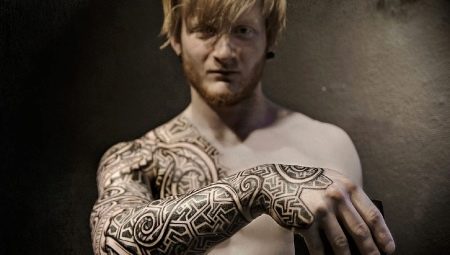
Viking tattoos are considered some of the most emblematic in the world, with most designs deeply rooted in Scandinavian tradition. For those of Scandinavian descent, this is a great way to honor their ancestors. Drawings like these are powerful and exotic statements as well.
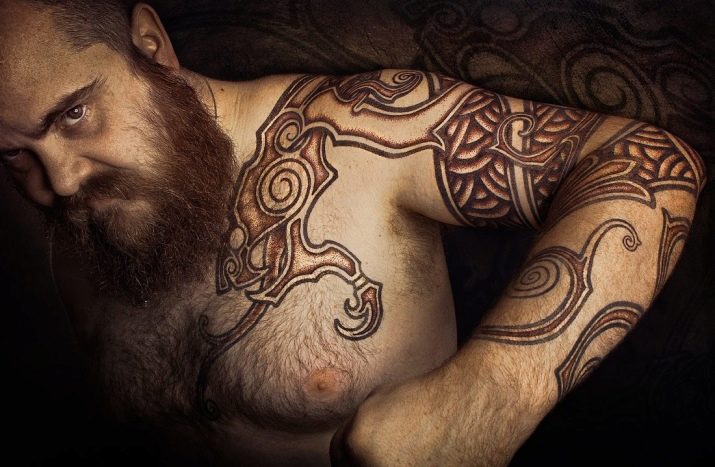
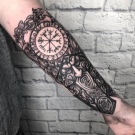
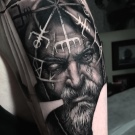
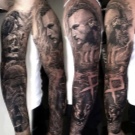
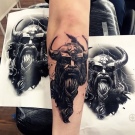

general description
The story goes that the Vikings were covered in tattoos from their fingertips to their necks. Viking tattoos consisted of ancient Scandinavian symbols, various patterns. No one can confirm exactly what symbols or patterns the Vikings used for their tattoos, but it is likely that the theme was taken from Norse mythology.
Many of the possible ornaments have been found on jewelry, bone carvings, boats, and other artifacts.
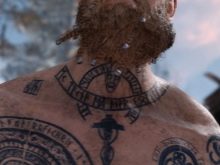
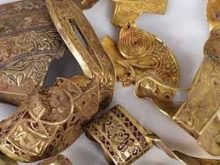
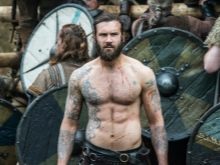
Viking tattoos are very popular all over the world these days. Many people decide to put on the body a drawing in the style of the Vikings, because they are fascinated by Scandinavian mythology, culture and beliefs. But in order to wear a similar pattern, you should be well versed in the meanings of the ancient Scandinavian symbols.
Vikings are an often distorted and misunderstood culture. These people were mainly sea farmers and traders (when not raiding).
Modern tattoos, which are attributed to the Vikings, in reality have nothing to do with the described era. The craftsmen found inspiration in the mythology of Scandinavia, from where they began to use various objects, living beings, runes and symbols, as well as weapons. When it comes to Scandinavian tattoos, myths and religious overtones come to the fore. It is a collection of myths from North German and Scandinavian folklore and religion.Stories include narratives of heroes, deities, and conquests.
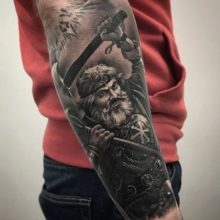
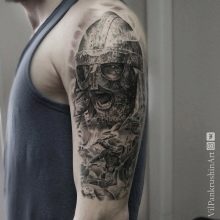
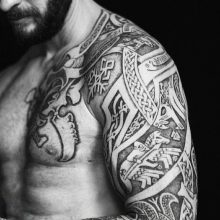
The most widely known Scandinavian gods and deities are:
- One;
- Thor;
- Loki;
- Freya;
- Frigg;
- Balder;
- Heimdall.
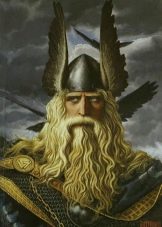
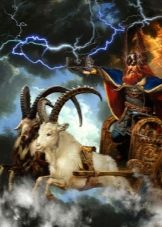
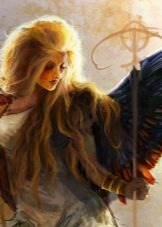
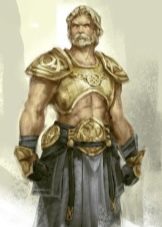
There are other common elements of Scandinavian mythology that can most often be found in drawings:
- Asgard;
- Yggdrasil;
- ravens: Huginn and Muninn (mean thought and reason);
- rams;
- Skoll and Hati are wolves;
- Valknut;
- helmet of awe.



Viking tattoos come in one color or full color.
Frequently used shades:
- dark green;
- dark blue;
- black.
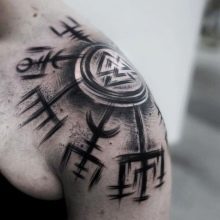
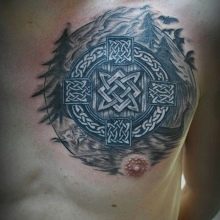
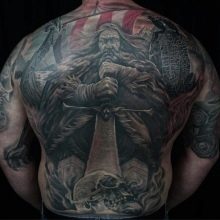
Popular tattoo options
Tattoos in the described style are intended for both women and men. The bracelet is very popular in both versions.
The ships
Men's tattoos on the theme of ships can be found often. The so-called drakkars have a distinctive feature - an upturned nose. They not only look impressive, but at one time they were considered the best of those that could move in shallow water and rivers.
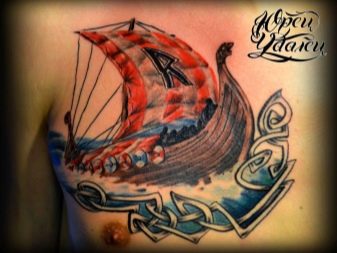

Warriors
Contrary to popular belief, Viking warriors were not adorned with horned helmets and massive swords in battle. Nevertheless, people were fascinated by this image, so a distorted view of the whole people appeared in films, art and even tattoos.
One of the interesting aspects of Viking culture is that they also wore tattoos as a sign of power, strength, obedience to the gods and as an indicator of their devotion to family, battle and way of life.
Viking warriors are often depicted:
- in large horned helmets;
- with long red or blond hair;
- with long or braided beards;
- with sword, ax and shield.
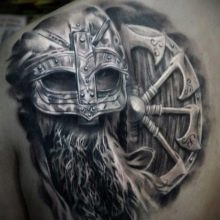

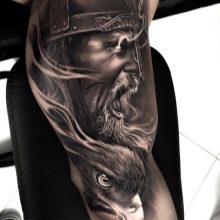
Valkyries
In Norse mythology, the Valkyrie is one of the many female figures chosen by those who can die in battle. Some researchers argue that Valkyries are not individuals, but a general image of the goddess of war. Scientist Hilda Ellis Davidson argued that the Germanic peoples from ancient times believed in ferocious female spirits, carrying out the orders of the god of war, sowing unrest, participating in battle, grabbing and possibly devouring the dead. Valkyries are often associated with birds in Scandinavian art.
While modern depictions often show the Valkyries as angelic beings receiving fallen warriors into Valhalla, Norse depictions are far more sinister. The Valkyries changed the direction of their arrows, forcing shields and swords to break, which led to the death of warriors. When the battle ends, the Valkyries select the bravest and most skilled of the fallen warriors and carry them to Valhalla and Folkwangr.
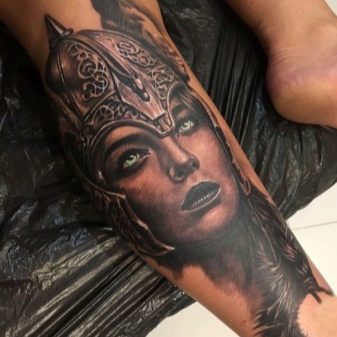
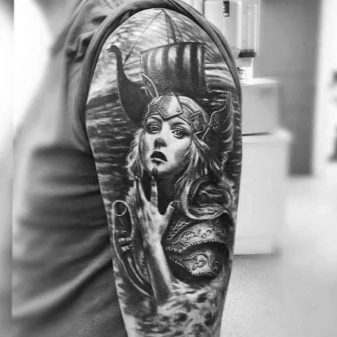
Other
There are many variations on what a Viking style tattoo might be. This is not only a girl in a special warrior outfit, but also an ax, a sword. The skull, various patterns and ornaments are very popular.
Valknut
The symbol represents three triangles that are connected. It became famous thanks to archaeological excavations. In the process, a couple of objects were found and even runestones with a symbol engraved on them. Therefore, Valknut is associated with the theme of battle, death.
This symbol has another name - Hrungnir.
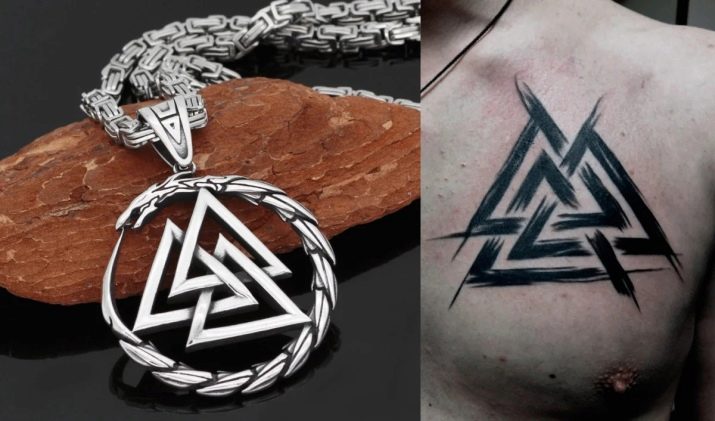
Triple Horns of Odin
The symbol is easy to recognize as it consists of three horns used as a mug at the table. The horns are intertwined. By themselves, they are a symbol of the god Odin. Such a drawing speaks of wisdom.
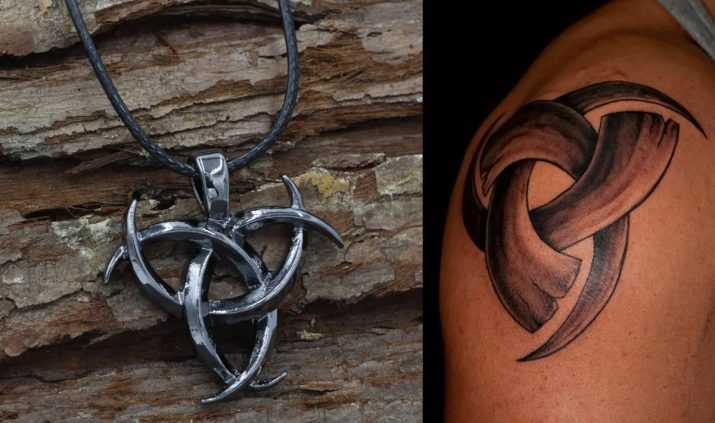
Troll cross
Protective symbol. It is a piece of iron that is bent in a special way. According to legends, the Scandinavian peoples wore it as a protection not only from the trolls, in whom they believed, but in general from black magic.
In truth, there is no evidence that the Vikings wore this symbol.

Vegvisir (Viking compass)
If we return to mythology, then this is a magic staff, thanks to which you can find your way back in bad weather. It is also called the Viking compass. The device is made of 6 poles. The interpretation of such a tattoo is simple: the drawing protects a person, not allowing him to go astray.
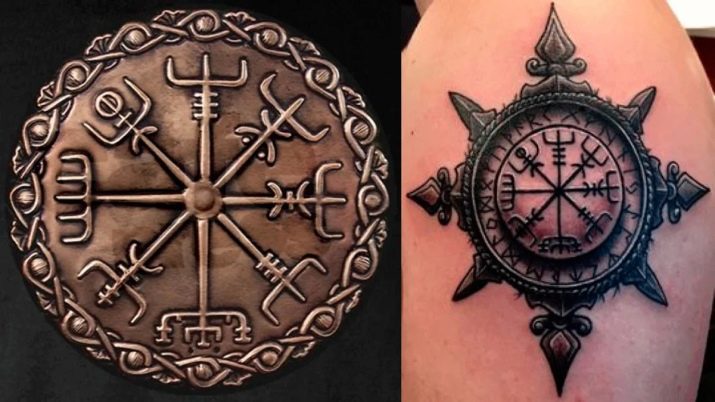
Mjellnir (Thor's hammer)
In Norse mythology, Mjellnir is Thor's magical hammer. Thor is the god of thunder, lightning and storms. He is also the protector of humanity and the god of war. People believe that wearing the symbol of Thor's hammer provides protection, strength and power to its wearer.
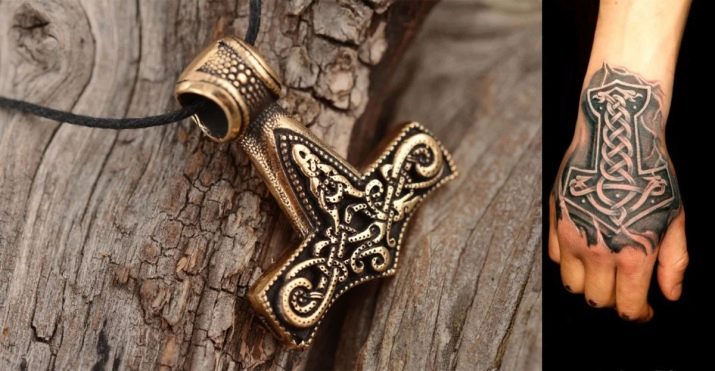
Gungnir (Odin's magic spear)
Gungnir is a powerful magic sword of Odin, as well as the spear of heaven in Norse mythology. Forged by the dwarves, the creators of the most powerful weapon for the gods, the spear was adorned with runes that helped give it deadly power.
Through archeology, we know that Vikings often did carve runic symbols on their weapons.
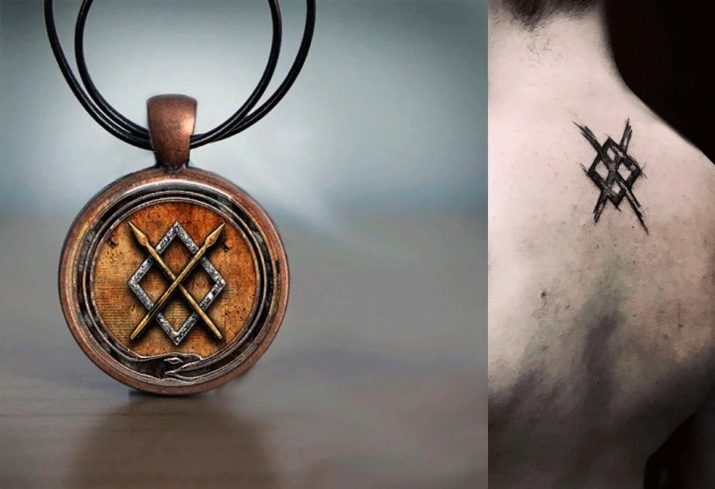
Runes
Runes are a form of Norse signs believed to have mysterious magical powers. They are used in different ways, depending on what type of energy you are trying to collect. Runes work like sigils and are said to have a direct connection with the wearer's subconscious.
The term "rune" actually translates as "hidden" or "secret" from Old English, where the word came from. Although these symbols were an ancient form of writing, they were often drawn on what was believed to be a secret object. For example, runes can be found on talismans, amulets.
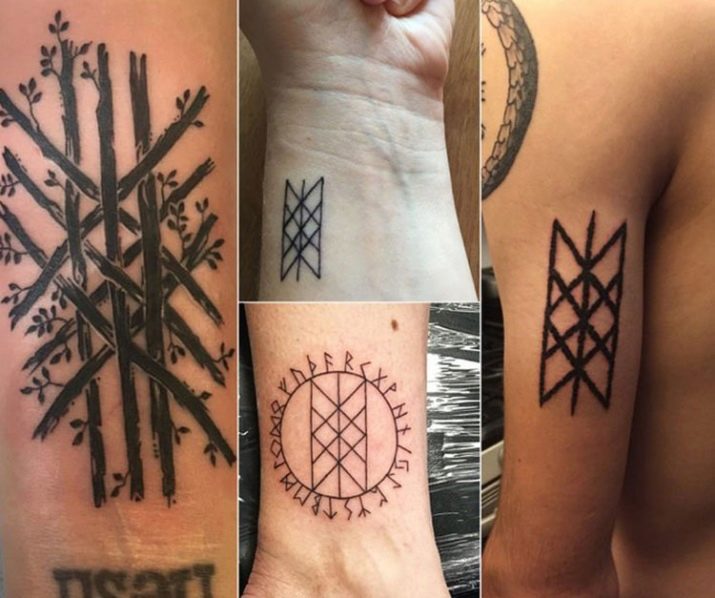
Huginn and Muninn (Odin's twin ravens)
Ravens are dark, majestic and highly intelligent birds. Due to their unique size and shape, they can be placed on the body in different ways. On the shoulder in combination with the chest is the best option, because it is possible to depict even the wingspan this way. In Norse mythology, Odin is sometimes referred to as the raven god. In the Viking religion, Odin himself has two crows, Huginn and Muninn, who are often depicted sitting on his shoulders. Odin's ravens Huginn and Muninn flew around the world and brought him information.
Huginn is thought and Muninn is memory. People believe that these birds are projections of Odin's consciousness.
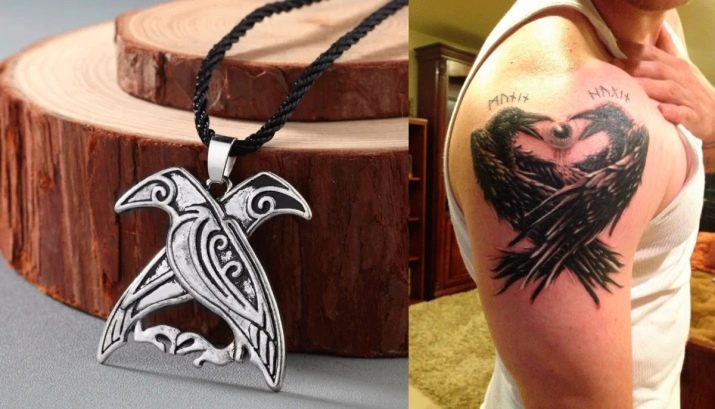
Wyrd's Web (Destiny Matrix)
Wyrd's Web, also known as Skulda's Web, is a Scandinavian Matrix of Destiny. It was supposedly woven by the Norns. The norns in Viking mythology were the creators of fate (or predestination). The web is made up of nine poles arranged in a grid, containing all rune shapes and representing all possibilities of the past, present and future.
Wyrd's web is a reminder that the actions of the past affect the present, and the actions of the present affect the future, that is, all timelines are inextricably interconnected.
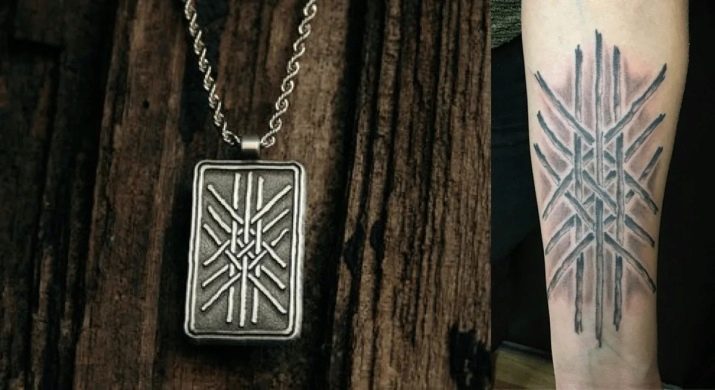
Helm of awe
The Helm of Awe, also sometimes called the Helm of Terror in Icelandic, is considered a symbol of magical power. It protects the wearer and also strikes fear into the enemy's heart. It is made from runes aimed at protection. The runes rotate in a circle.
Most Vikings painted this symbol on their foreheads, in the space between the eyes, or applied it to their hand before going into battle. They believed that it gives protection and makes the warrior invincible.

Longboats
The longboat is one of the most popular elements of the Viking culture. The ships, often adorned with the head of a dragon, were designed to instill fear in the raided peoples. These efficient and well-built ships were an engineering feat of their time. They allowed the Vikings to swim long distances.
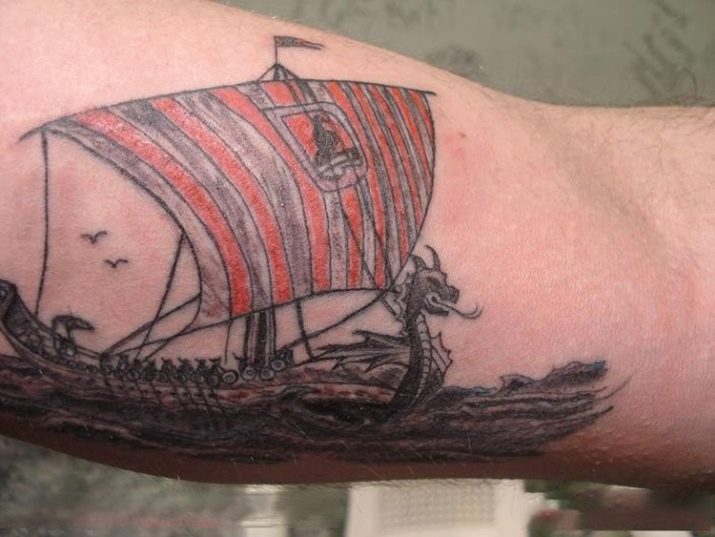
One Eyed Wanderer (One)
While other gods and deities are only occasionally the subject of tattoos, Odin is considered such a prominent figure in Norse mythology that it deserves a special description. Odin is often portrayed as a wizard. He is even credited with being the progenitor of JRR Tolkien's character Gandalf. According to legend, God gave one eye as a sacrifice to gain knowledge about other worlds. Odin is the most powerful god in Asgard (the abode of the gods).
One is often associated with:
- healing;
- death;
- wisdom;
- witchcraft;
- poetry.
It's funny that the modern word "environment" comes from the Germanic word "wotan". It means "one" and therefore Wednesday is Odin's day.
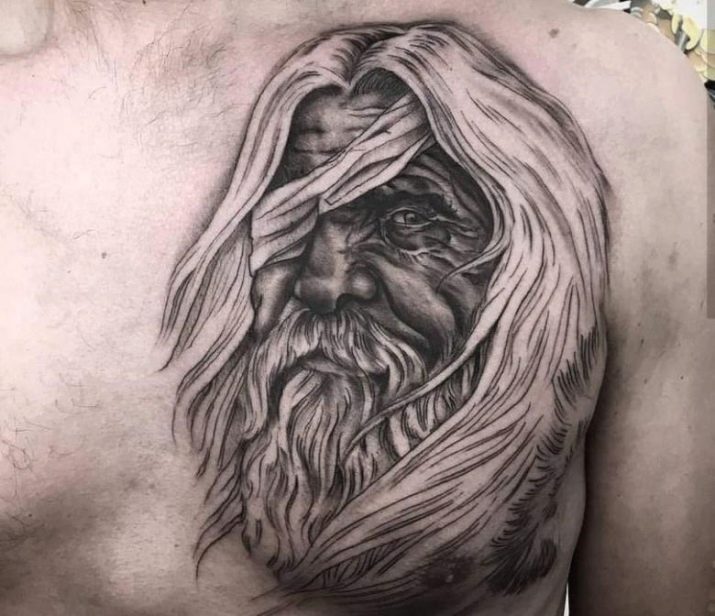
Yggdrasil
Yggdrasil is a massive, impressive mythical tree that is central to Norse mythology. It is said that this tree, sometimes called the tree of life, connects the nine worlds of Scandinavian paganism. The gods of Scandinavian mythology, considered the center of the universe, gather by the tree every day. Its branches stretch to heaven, and its roots go deep into the underworld. Other creatures live inside the tree, such as dragons (Heyergelmir), the unnamed Eagle and the deer Durabror, Duneirr, Djalinn and Dhainn.
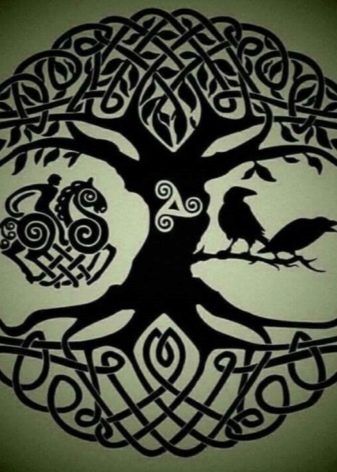
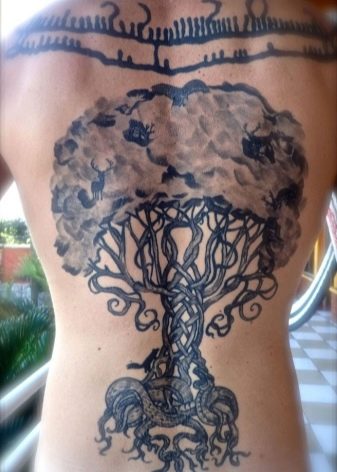
Norns
Norn is a female creature that controls the fate of both gods and humans. This power ranks them among the most powerful creatures, and even the gods submit to the fate that they predict. All norns are women, each with a name that indicates ability. Urd means "past", Verdandi - "what is now appearing", Skuld - "what will be." The norn are said to live under Yggdrasil.
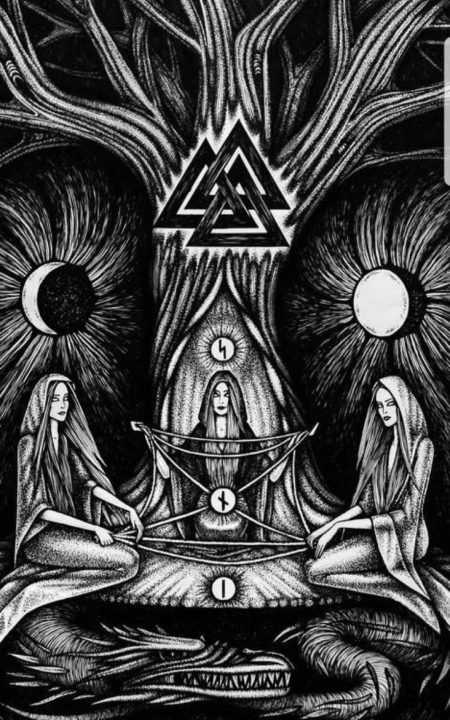
Where can you stuff?
There are many places where it is possible to get a Viking tattoo:
- shoulder;
- hand;
- back;
- breast;
- leg;
- forearm;
- shin;
- caviar;
- head;
- face;
- wrist.
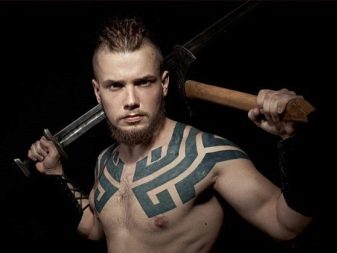
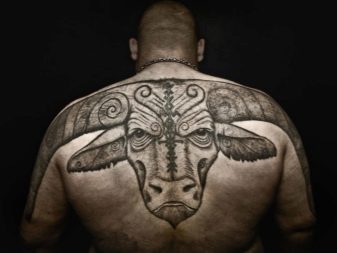
You need to understand that the place where the tattoo will be applied is not chosen by chance. This is always a special meaning and deep interpretation of each drawing.
Viking tattoos are a complex plot, massive, large sketches that fill the entire chest or arm. Runes can be applied to secluded places, make them small or noticeable from afar, since such a sign can take up the entire back.
- Shoulder. Warriors and ravens are usually depicted on the shoulders. You can apply an image of a deity. Such tattoos have always been considered the personification of a man's strength and courage, although today women also actively use them.
- Forearm. One of the versatile options for where to neatly position the tattoo. Medium sized sketches are fine here. You can deduce a rune, the face of a god, or any of the plots of Scandinavian mythology.
- Wrist. Space here is limited, so small protective symbols and other signs look good. If the tattoo is done by a woman, a pattern in the style of Scandinavian writing will look good.
- Palms, hands or fingers. If a man wants to subconsciously strengthen his qualities, to become spiritually more fulfilling, then he usually uses special signs as a tattoo. They are assigned magical properties. On your finger or palm, you can stuff something very personal, for example, a sign of protection. Sometimes small ornaments are stuffed here. They look good if they consist of several patterns.
- Sleeve. This tattoo is understood as a drawing that completely envelops the arm. It is always a very complex composition with a special plot. Inside there can be not only runes and ornaments, but also images of gods, warriors and other characters of Scandinavian mythology.
- Neck. The neck has become an equally popular place for tattooing. Here you can usually see small drawings that have a special sacred meaning. Experts in esotericism advise choosing amulets and talismans, since their strength increases when they are located close to the head.
- Breast. The chest is a large area to work, here you can afford a lot. A raven, a character from a myth, a wild beast or a ship will look good here. Girls can decorate their breasts with runes or ornaments.
- Side. Although drawing on the side is the most painful of all, this does not frighten lovers of body painting in any way. Images with a deep sacred meaning are usually applied here. An excellent option would be a tree of life or a ship, which symbolizes the search for oneself. Protective talismans can also be applied to the side.
- Hip. Scandinavian tattoos are almost never applied to the thigh.Today this option is preferred by girls to a greater extent, so these are patterns, ornaments and compositions from runes.
- Back. The widest "canvas" for the work of the master. You can safely apply a large sketch here without worrying that there is not enough space. Gods, beasts, ships, birds and even entire storylines - all of this fits perfectly on the back. You can enhance the meaning of the applied drawing with a rune or an inscription in an ancient language.
- Scapula. A medium-sized drawing is placed here. A good option is a rune compass. A small pattern can be applied.
- Leg. Elongated patterns are stuffed on the legs. Almost always these are runic ties, ornaments from several patterns. You can completely cover your leg like a sleeve tattoo and depict an entire battle, an episode from mythology, and much more.
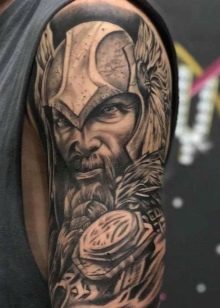
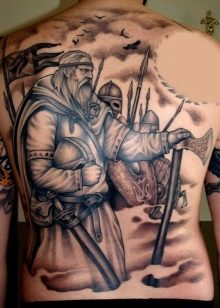
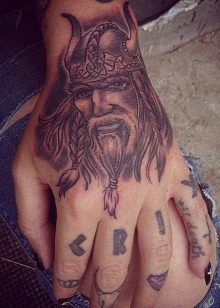
In order not to be disappointed, there are several basic principles that should be followed when choosing a tattoo sketch:
- large compositions are applied to the back, chest or leg (that is, where there is a place, if suddenly the master did not calculate with the proportions);
- if the drawing is of an average degree of complexity and small in size, then it is best applied to the shoulder blade, shoulder, thigh or forearm;
- small runes, symbols and protective signs should be knocked out on the palm, wrist, finger or neck.
Personal tattoos with a special sacred meaning are best done where no one will see. If the drawing is done for demonstration to others, then open areas of the body are suitable.
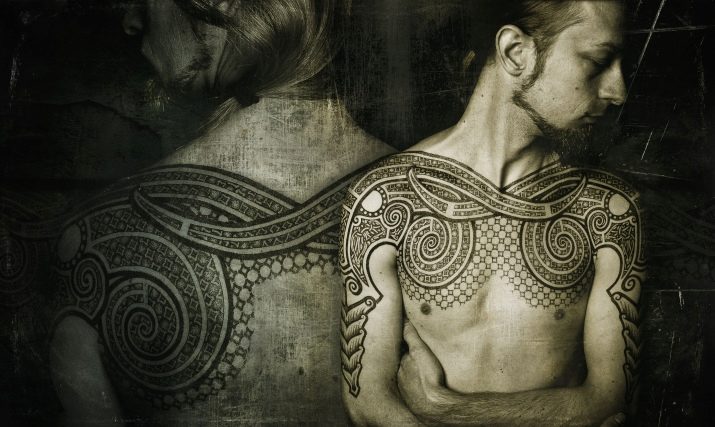
Beautiful examples
Viking tattoo designs can be varied. Here are some pretty options.
- The realism of these characters is simply amazing.
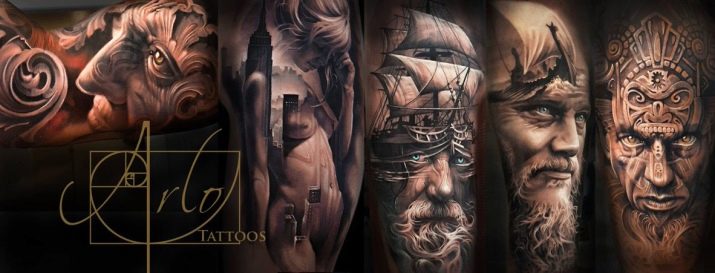
- Tribal technique. Here the master depicts a drawing from various ornaments.

- Graphics are a good option for those who don't want to complicate things.

- Gorgeous work in black and white.









